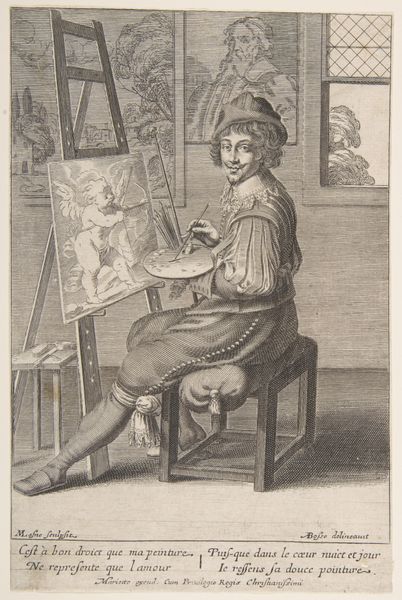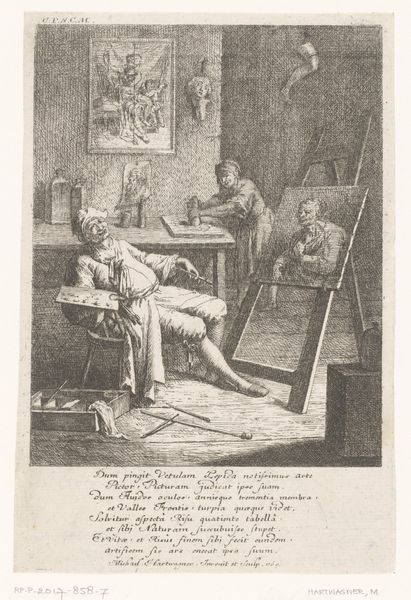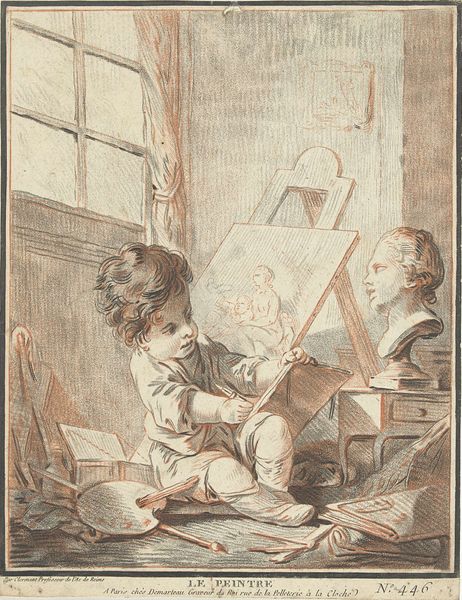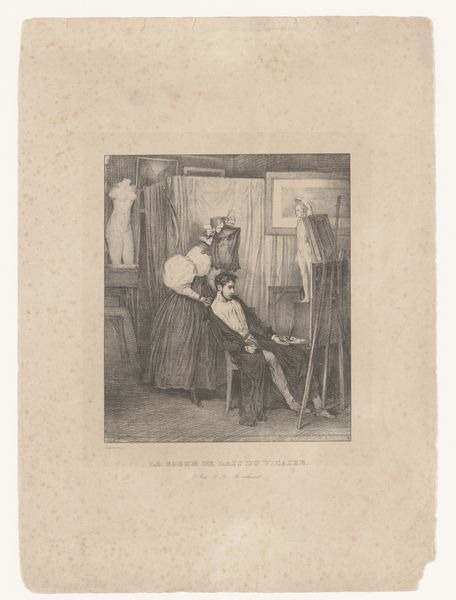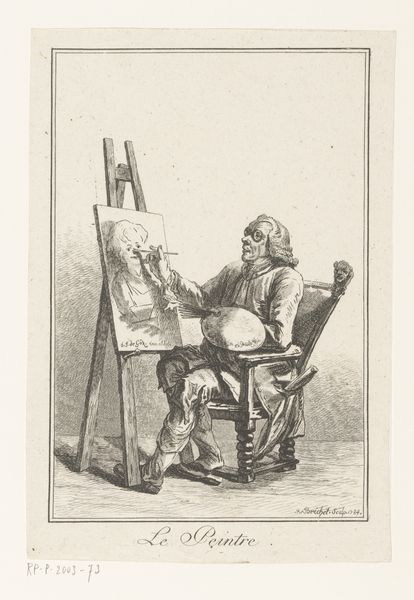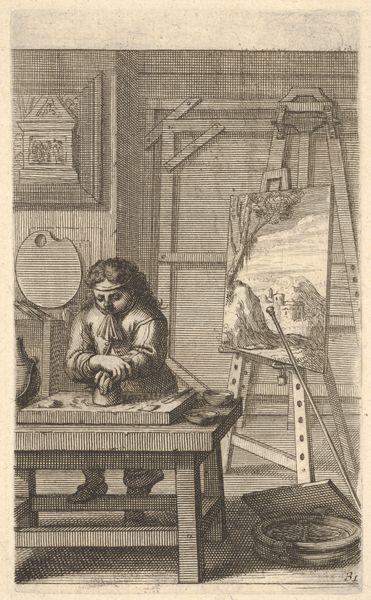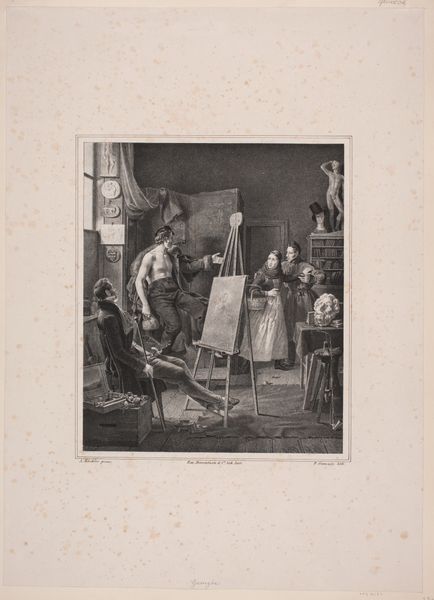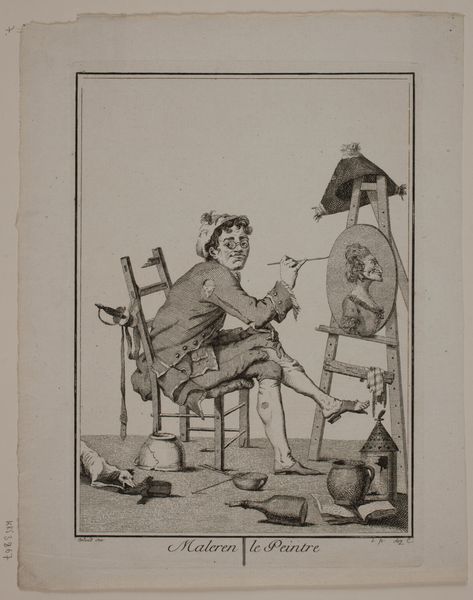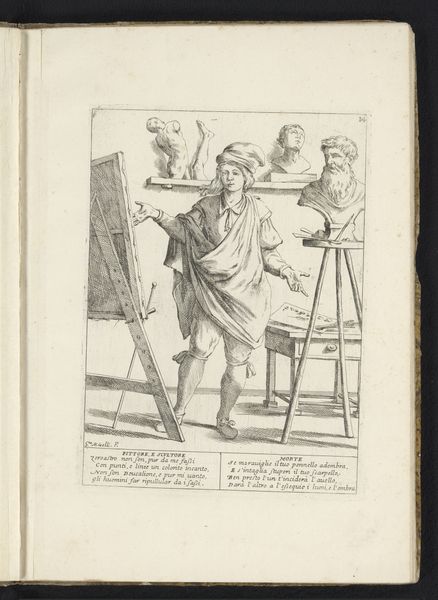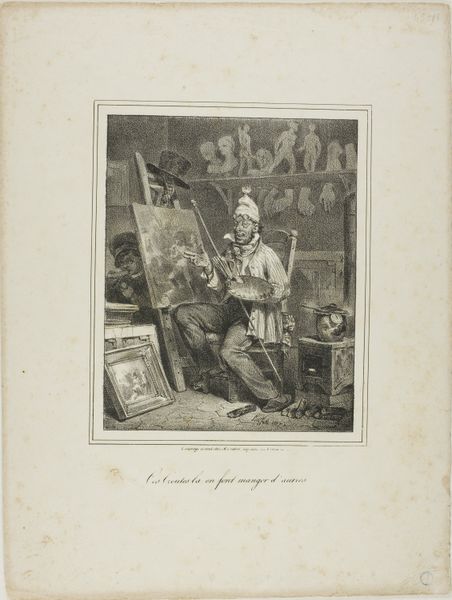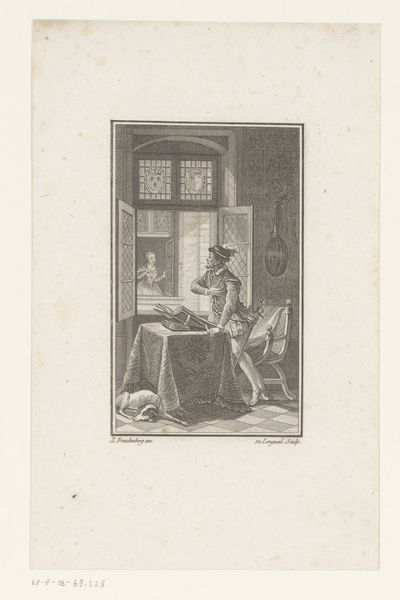
Painting (La Peinture): a monkey seated at an easel, dressed in a robe and beret and holding a painter's palette, a framed painting hanging on the wall beyond 1700 - 1739
0:00
0:00
drawing, print, engraving
#
portrait
#
drawing
#
allegory
# print
#
caricature
#
old engraving style
#
engraving
#
rococo
Dimensions: sheet: 10 1/16 x 7 5/16 in. (25.6 x 18.5 cm) plate: 9 13/16 x 6 7/8 in. (25 x 17.5 cm)
Copyright: Public Domain
Editor: This is "Painting (La Peinture)," an engraving by Louis Desplaces, dating somewhere between 1700 and 1739. The image depicts a monkey dressed as a painter, sitting at an easel. It’s… strangely compelling, but I'm not quite sure what to make of it. What do you see in this piece? Curator: The use of engraving allows for mass production and distribution, transforming the artwork from a unique object into a commodity. Consider the implications of representing artistic creation itself, painting in this case, through this very reproductive medium. The monkey as a stand-in for the artist is telling - are we to view art and its process as a kind of mimicry, a skilled trade akin to labor? How does that relate to ideas of skill and craftsmanship in engraving itself? Editor: So, you're saying the medium itself is part of the message? The engraving process, like the monkey mimicking the painter, cheapens and industrializes art creation itself? Curator: Precisely. It challenges traditional notions of the artist as a genius working through divine inspiration and points to something altogether more grounded. In addition, consider the social context - Who would be buying this? What ideas about art, taste, and class would they hold? Is this celebrating or satirizing those values? Editor: I see...it shifts my understanding completely. It's not just a funny image; it's a commentary on the commercialization of art. Thanks! Curator: It underscores that art is more than just a beautiful image, it reflects the broader social and economic forces that shape its production and consumption. Thanks to observations like these we can bring into focus the nature of art making and its societal implications during the rococo period.
Comments
No comments
Be the first to comment and join the conversation on the ultimate creative platform.
